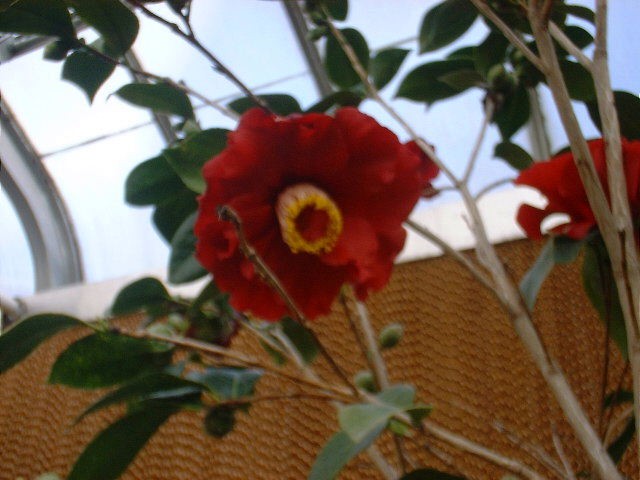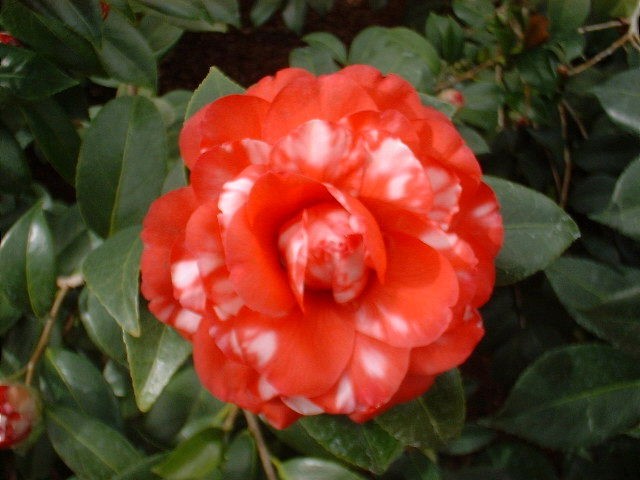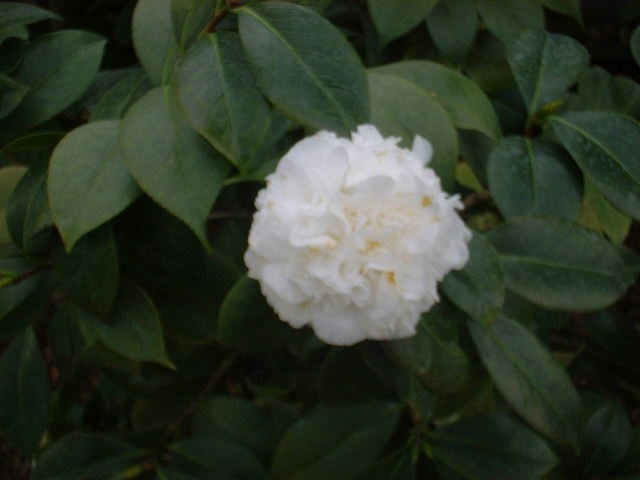|
Gardens Ablaze |
||
|
|
Camellia
|
SerenityHealth Wall Fountains Stunning Wall Water Fountains Many styles and sizes to choose from. |
|
Detailed Shrub & Hedge
Plant Profiles Site Map
Home
|
If you are lucky enough to live in a temperate zone, such as the deep south or California, the Camellia may just be the winter-interest landscape plant you've been looking for. However, even if you are in a colder winter area, you can still grow Camellias as showy container plants. The most famous variety, Camellia sinensis, (or tea plant) is the main constituent used in all "green teas" that you buy in the grocery or health food store. The sinensis varieties are not as showy as other Camellias, but still make nice (and useful) shrubs or container plants for the home landscape. The flowers are usually white, single, and fragrant. The picture to the right depicts the flower of the tea type of Camellia. Please scroll to the bottom of the page for more information on this variety of Camellia and how to actually make your own green teas.
Common Japanese Camellias (Camellia japonica) can grow to a height of 25 feet, but in most cases top out at about 10-12 feet, with a width of 6 feet or more, so take this into consideration when deciding on placement. They are slow-growing plants, and given the right conditions can live for 100 years or more. They require very little pruning, except for removal of damaged branches and removal of shoots that become too long and make the plant look lopsided. Cutting out dead and weak stems can be done anytime, but severe pruning, or shearing all the leaves to shape the plant, should only be done from mid-February through early May - basically after flowering and before new growth begins.
Most Camellias do their best in partial shade. Placement in a northern or western configuration usually works better than in a southern or eastern-facing position, as protection from strong morning sun helps the plant withstand the colder weather better. Leaf scald, or leaf yellowing can occur when not enough shade is provided. Water once a week while the plant is becoming established, and once established, soak once per week during dry spells. Camellias prefer a slightly acid soil, and periodic applications of an acidic plant food will usually be appreciated. A thin layer of mulch to conserve soil moisture is also recommended.
Health benefits of taking Green Teas internally include relief from digestive disorders and gastritis, treatment of infectious dysentery, relief from symptoms of inflammatory bowel disease, guarding against tooth decay, boosting the immune system, preventing and combating cancers, including breast, prostate, stomach, esophageal, pancreatic, liver, and skin cancers, combating leukemia cells, decreasing risk of heart disease, cardiovascular disease, high blood pressure, and stroke, and possibly being of benefit in blood sugar regulation in diabetics. Preliminary studies also show that the powerful antioxidant effects may have a role in preventing the ravages to the body associated with aging, therefore making it a possible anti-aging substance. It also appears that using green tea as a gargle may help prevent the onset of flu, as it appears to have some fairly powerful anti-viral properties. Other anti-viral uses very probably include fighting HIV and AIDS, and certain strains of hepatitis C and herpes simplex, though more studies need to be done relating to these problems. As an anti-bacterial, Green Tea is believed to help prevent the growth of e-coli in the intestines.
Green tea is in general not harmful and has few side-effects, so to reap the benefits from it, you can drink 3-10 cups per day. However, it does contain caffeine, so you may want to avoid it right before bedtime if caffeine interferes with your sleep. Also, if you are prone to being anemic, use Green teas in moderation, as they appear to reduce the body's ability to utilize iron.
Custom Search
|
|
|
Gardens Ablaze |
||
 More familiar
to home gardeners are the very showy Camellia japonicas. These are
prized not only for their lovely winter flowers, but also for their glossy,
evergreen leaves. Camellias are useful as foundation plantings, specimen plants,
flowering hedges, or tub and container plantings. Choosing the right
Camellia for your situation is the most important step in successfully growing
any Camellia. Factors to consider include suitability to your particular
climate, flower,
form, blooming season, and the actual growth habit of the plant. Plants
that bloom from January through February are recommended for warmer weather
areas, and November through December or March through April blooming varieties
are recommended for cooler weather areas. Many varieties will withstand
cold spells of around 10 degrees with minimal damage, though the buds and
flowers will not survive.
More familiar
to home gardeners are the very showy Camellia japonicas. These are
prized not only for their lovely winter flowers, but also for their glossy,
evergreen leaves. Camellias are useful as foundation plantings, specimen plants,
flowering hedges, or tub and container plantings. Choosing the right
Camellia for your situation is the most important step in successfully growing
any Camellia. Factors to consider include suitability to your particular
climate, flower,
form, blooming season, and the actual growth habit of the plant. Plants
that bloom from January through February are recommended for warmer weather
areas, and November through December or March through April blooming varieties
are recommended for cooler weather areas. Many varieties will withstand
cold spells of around 10 degrees with minimal damage, though the buds and
flowers will not survive.  One of the
most important aspects of Camellia selection is the type of flower that any
particular plant produces. Many of
the Camellias sport large, showy flowers, but even when not in bloom, these
plants make
fine hedges and specimen plants with their evergreen, glossy, deep green
leaves. There are five main types of Camellia flowers, including Single,
Semi-double, Anemone, Peony, and Formal Double, all
of which are pictured on this page.
One of the
most important aspects of Camellia selection is the type of flower that any
particular plant produces. Many of
the Camellias sport large, showy flowers, but even when not in bloom, these
plants make
fine hedges and specimen plants with their evergreen, glossy, deep green
leaves. There are five main types of Camellia flowers, including Single,
Semi-double, Anemone, Peony, and Formal Double, all
of which are pictured on this page.  Green
Tea:
Camellia sinensis is the source of all green teas, and the
differences in taste of the different types of teas are the results of different
processing techniques, and differences in individual plants. Green teas
are made by allowing the leaves to wither in hot air, then pan frying or placing
in an oven to halt the fermentation process. Oolong teas are wilted in the
sun, then bruised and allowed to partially ferment, until the leaf edges turn
slightly red. Black teas are fermented in humid, cool rooms until the
entire leaf is darkened. Studies suggest that the Green Teas are the most
beneficial for health because the leaves are not allowed to ferment at all,
preserving the antioxidant properties of the fresh leaf.
Green
Tea:
Camellia sinensis is the source of all green teas, and the
differences in taste of the different types of teas are the results of different
processing techniques, and differences in individual plants. Green teas
are made by allowing the leaves to wither in hot air, then pan frying or placing
in an oven to halt the fermentation process. Oolong teas are wilted in the
sun, then bruised and allowed to partially ferment, until the leaf edges turn
slightly red. Black teas are fermented in humid, cool rooms until the
entire leaf is darkened. Studies suggest that the Green Teas are the most
beneficial for health because the leaves are not allowed to ferment at all,
preserving the antioxidant properties of the fresh leaf. Externally,
green teas can be used for cuts, scrapes, wounds, cold sores, acne, and herpes
sores. The easiest way to gain these benefits is to place a used teabag on
these areas for treatment (while simultaneously drinking the tea, of
course!).
Externally,
green teas can be used for cuts, scrapes, wounds, cold sores, acne, and herpes
sores. The easiest way to gain these benefits is to place a used teabag on
these areas for treatment (while simultaneously drinking the tea, of
course!).